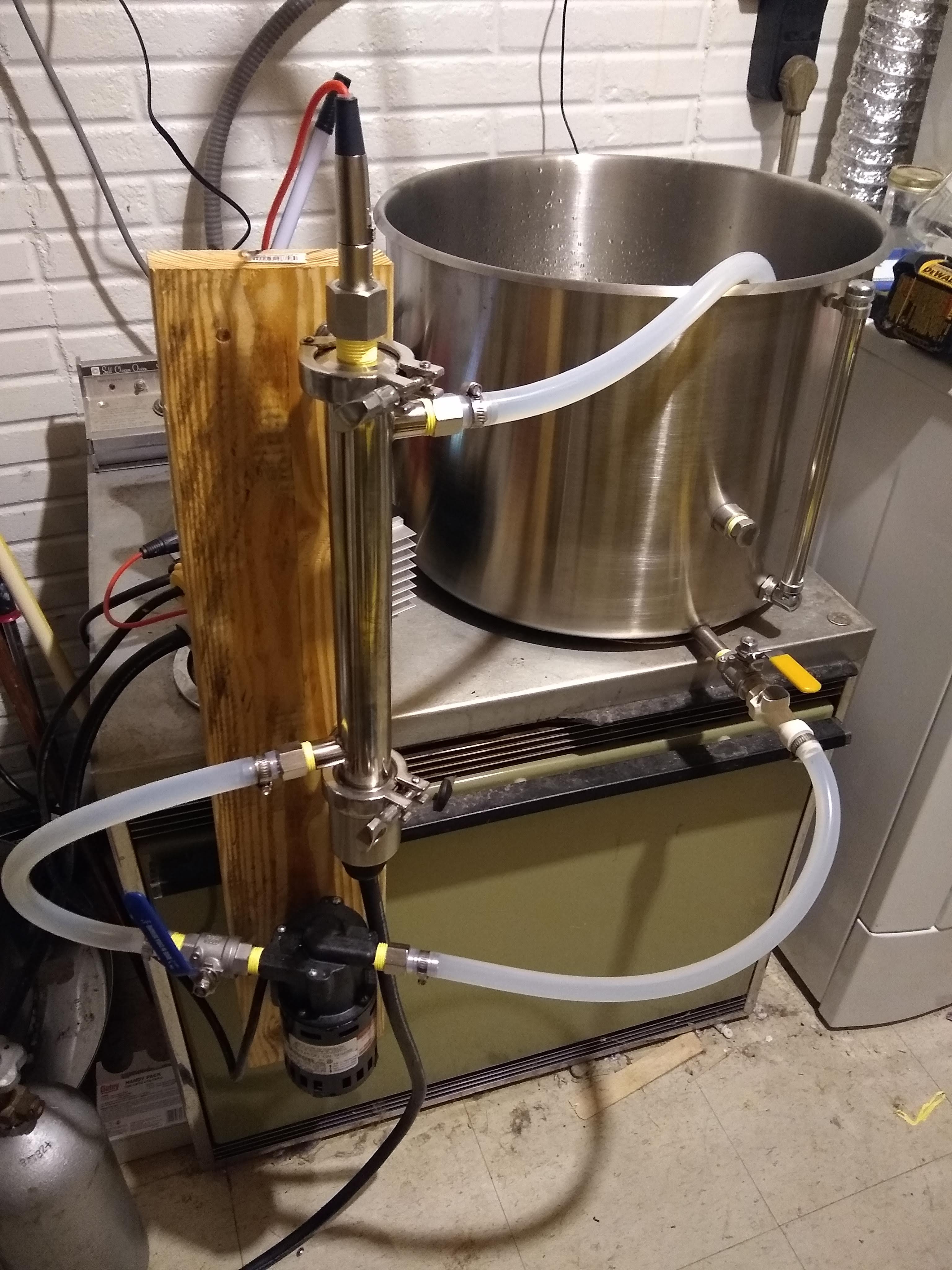JLeather
Well-Known Member
I've scrounged up enough parts to give RIMS a try. March pump through a BrewHardware RIMS tube with an Amazon element and a Brew-Chief controller. 15 gallon kettle, 400 micron recirculating BIAB bag, and a false bottom just to make sure I always have suction evenly across the bottom of the bag. I use the stove top to help get to strike temp faster, and after mash-out I use the stove and a HotRod 2200W heat stick to boil. Test went well, no leaks, temps up pretty quickly, etc. One question though. When I set the controller for say 152°F I get 152°F water out of the discharge hose, but the kettle stays around 149°F I assume due to heat loss of the kettle. If I wanted a 152°F mash temp should I set the controller for 152°F so that's the temp of the water sparging the grains, or should I bump it up until my kettle liquid reads 152°F?







